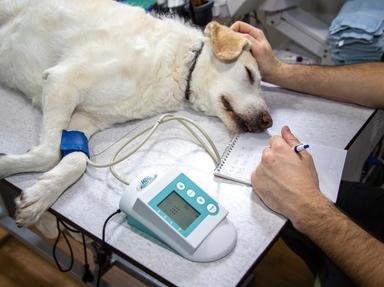Quiz Answer Key and Fun Facts
1. A yeast infection in dogs is a type of fungal infection.
2. What is the most common fungal infection in dogs?
3. This systemic fungal infection is most common in dogs that live close to water, as the organism grows best in wet, acidic soils. In the U.S., the disease is found primarily in the Mid-Atlantic states and in areas along the Mississippi, Missouri and Ohio rivers. Symptoms include coughing, eye problems, skin lesions, and weight loss.
4. This fungal disease is often called "Valley Fever." It is most common in the southwestern U.S. It prefers dry, alkaline soil. Symptoms of infection with this agent include respiratory disease with coughing and weight loss. It also commonly affects the long bones such as the leg bones.
5. Most commonly acquired from bird droppings, this fungal infection, like most other fungal infections, usually starts in the lungs. However, it also commonly affects the gastrointestinal tract, causing diarrhea, anemia, weight loss and internal bleeding.
6. Several breeds of dogs share a (presumably inherited) susceptibility to one type of fungal skin infection. Affected breeds include Maltese, several breeds of terriers, poodles, German shepherd dogs and Shetland sheepdogs.
7. This fungal infection is most common in dogs with a compromised immune system. It is the most common fungal cause of neurological problems. Unlike other fungal infections, dogs with this disease usually do not have respiratory symptoms.
8. Fungal diseases are usually easy to diagnose.
9. What is the most commonly used drug for treatment of systemic fungal infections in dogs?
10. Most canine fungal infections can be transmitted to humans.
Source: Author
crisw
This quiz was reviewed by our editing team before going online.
Any errors found in FunTrivia content are routinely corrected through our feedback system.
